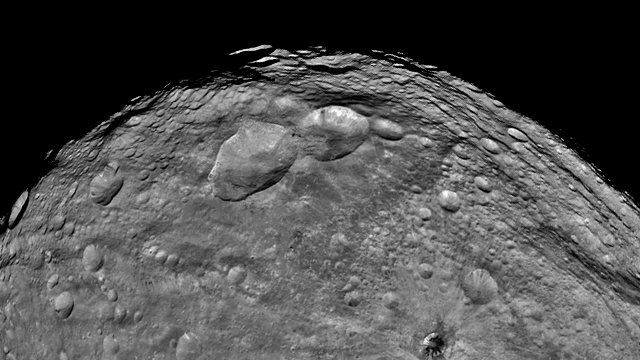
Ion thrusters full! Set us into a standard orbit, Mr. Sulu….
Well, I don't know if any of the helms-persons at NASA are named Sulu, but we have indeed achieved orbit—that is, NASA's Dawn spacecraft around the large asteroid Vesta.
I wrote about Dawn and Vesta not long ago, before the spunky little ion-driven robot arrived there. Since then, Dawn has reached its first destination, 117 million miles from Earth, entering a 9,900 mile orbit around Vesta on July 15th. Science observations are expected to begin in early August, but already Dawn has sent back wonderful preliminary images showing details never before seen.
Vesta's surface may bear features and materials among the oldest in the Solar System. Already we can see that Vesta is pock-marked and scared by impacts incurred over the eons. Similar to how a forensic scientist may determine the sequence of events that occurred at a crime scene by studying the physical evidence left behind, the scars and residues on Vesta will help paint a picture of conditions throughout the Solar System's history.
Almost as cool as its science mission is Dawn's propulsion system. To use a term from a certain Smith and Jones movie, it's "the New Hotness." Technology first demonstrated on NASA's Deep Space 1 spacecraft, Dawn's engine is the first solar electric ion propulsion system used on a purely scientific spacecraft. Using electrical power generated by solar panels, Dawn's engine ionizes xenon atoms and accelerates them with an electric field, squirting them out the back of the engine to produce thrust--similar to a balloon-powered car or rocket toy propelled by spurting air. And though a conventional chemical rocket can produce much stronger thrust, Dawn's ion drive, operating with high efficiency and over longer periods of time, achieves up to 10 times the velocity change for an equivalent amount of propellant.
